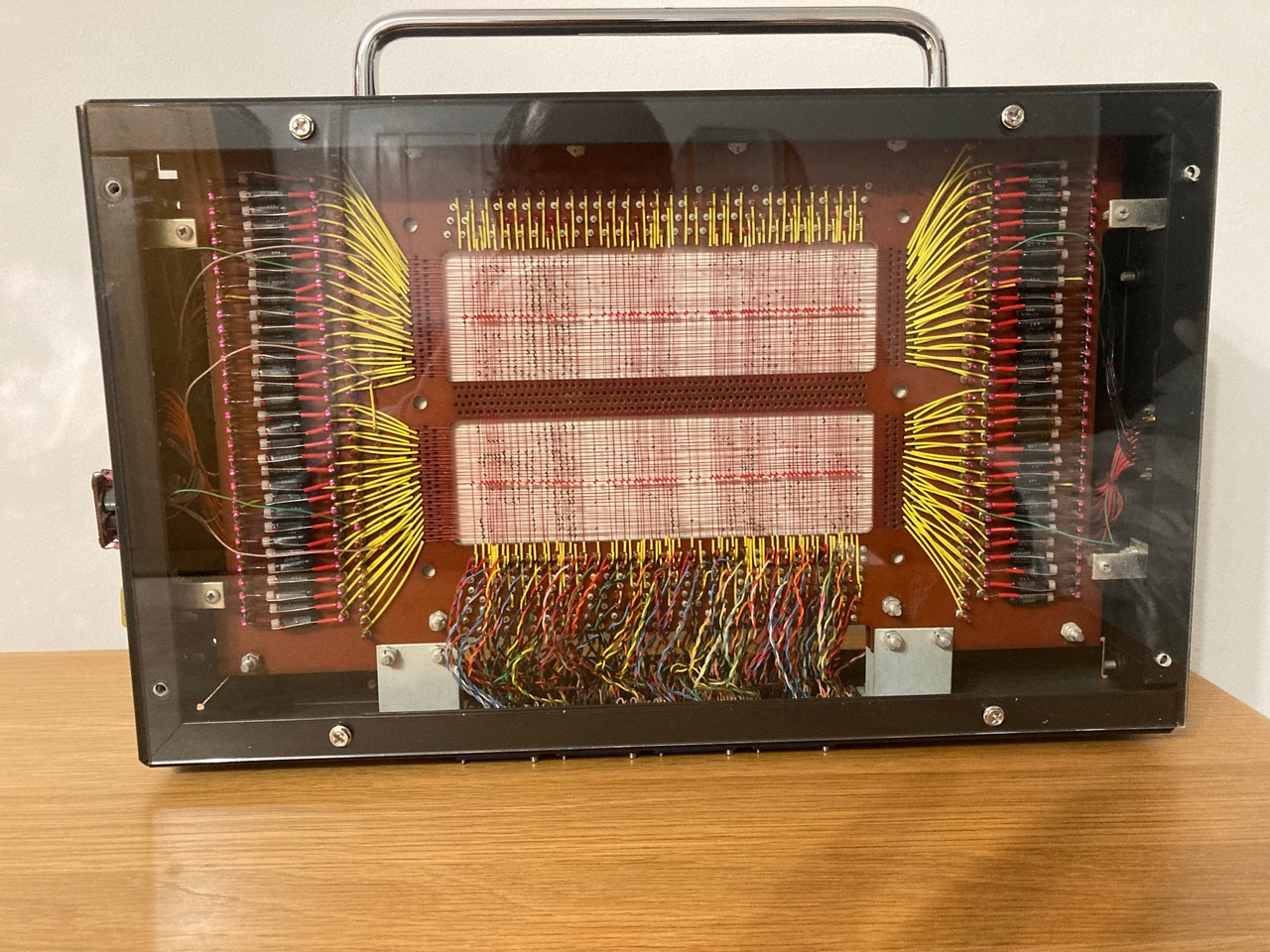|
8th January 2023
2023 started off with a query that led to an interesting bit of detective work by a number of our colleagues and partners on the project!
A member of the wider LEO family emailed the LEO Computers Society with the image (to the left) asking for help in identifying a strange piece of lace-like material that had a sticky note attached saying 'core memory plane'.
Then ensued a discussion amongst several former LEO engineers about exactly what had been found.
The first engineer to comment was John Daines, who said "No idea if it is LEO. As the yellow-sticky note says, it is part of what is, or could become, a piece of core memory. The little black things are ferrite cores that each have an x and a y wire through them so that they may be addressed, individually. Pulsing an x and y wire would change the polarity of the core and induce a pulse in the “read” wire that threaded through the cores. A block of core store would consist of 46 planes like this for a 40 bit word plus parity bits on each half word plus 4 store tag bits."
In other words, this looks like magnetic core memory that uses tiny magnetic rings, the cores, through which wires are threaded to write and read information. Each core represents one bit of information. The cores can be magnetised in two different ways (clockwise or counter-clockwise) and the bit stored in a core is zero or one, depending on that core's magnetisation direction. Core memory was the predominant form of random-access computer memory for 20 years (circa 1955-75).
John went on to say "I’ve never seen anything like this and it looks as though it might be partly manufactured. I was told that they were made by lace makers and that once all the threading was done, they were all shaken together to form a compact matrix. The loops at the end suggest that it may be under construction. On the other hand it could have been pulled apart."
A second engineer, former LEO commissioning engineer John Page, who now lives in California, commented "I don't think there is anything I can add to what has already been said. It looks like a ferrite core memory plane. One other place ferrite cores were used on LEOs was in the microplanes that held the microprograms. (These days these would be called a ROM - Read Only Memory.) But I doubt it is a microplane because the topology of the wiring looks like the conventional x,y plus sense wire arrangement of the regular memory plane. It looks very crude as if it is either a prototype or one being manufactured. My guess would be the former. As to whether it has anything to do with LEO - I doubt it, unless it came from a LEO development project. Its meaning is probably best determined by the context in which the photo was found."
John Daines summed it up: "an example of a ferrite core memory that isn’t as compacted as they usually are". So definitely core memory then.
And then John Page had further thoughts on it. "One last thought on the photo: It looks pretty crude. When you see it in comparison to the actual microplane from LEO III/25 I suspect this is a development prototype rather than a production plane. Also, the production unit is more sparsely populated with cores which is what I would have expected."
The actual microplane from LEO III/25 can be seen below for comparison.

This LEO III/25 microplane is almost identical to one we have on display currently in the LEO area of the main gallery, which is also from LEO III/25, which was installed at the Inland Revenue in Worthing, UK in 1965-74.
John Page then went further: "Going out even further on a speculative limb: If it indeed was a prototype, they may have started with a memory plane and removed cores that were destined to be zeros. They are quite brittle and could easily be snipped out with small wire cutters."
It isn't that unusual to find examples of core memory in early computing collections and at the museum we have many pieces of core memory of varying dates, including some possible prototypes and some examples that are similar but that we know very little about, such as item CH 4642. But the potential core memory in this photograph looks very undeveloped or unfinished, much like CH 18698 and, importantly, it had a possible LEO connection seeing as it was found in a former LEO employee's collection.
We may never know exactly what this is but if nothing else, this exchange is a really nice example of how much a museum benefits when it can work with people who worked on the technologies that are found in collections like ours! The answers given to a seemingly simple question of 'what is this?' and the reasoning behind those answers, are invaluable to us in establishing what something is (or isn't).
We look forward to displaying this object alongside the microplane that is already on display. I think our visitors will find it very interesting.
Posted by: Lisa McGerty
|






